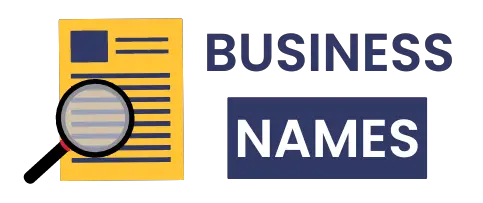You’re 40. You check your retirement account and feel sick. The number is way too small. Your friends talk about retiring early, but you think you missed the boat.
Here’s the truth: You didn’t.
If you have $0 in retirement savings at age 40 but start contributing $23,500 a year for the next 25 years, your 401(k) could grow to almost $1.5 million assuming a hypothetical 7% annual rate of return. That’s enough to retire early.
Most people feel behind. According to the Federal Reserve’s 2024 Report on the Economic Well-Being of U.S. Households, only 35% of Americans say their retirement savings are on track.
You’re not alone. But you have something 25-year-olds don’t: higher income and 20 years until normal retirement age.
This guide shows you how to catch up fast. You’ll learn the new 2025 rules that help late starters. You’ll see real numbers and strategies that work. And you’ll discover why starting at 40 might be better than you think.
What $200K at 40 Really Means (And Why It’s Not Bad)

Americans in their 40s have an average retirement savings balance of $545,424; the median is $213,645. The median means half of the people have less than $213K. If you’re close to this number, you’re normal.
But normal isn’t good enough if you want to retire early.
Here’s what financial experts say you should have. A 40-year-old making $45,000 a year should have up to $135,000 (three times their income) saved. If you make $75K, you should have $225K. If you make $100K, you should have $300K.
Let’s say you’re behind. You have $100K saved and make $80K per year. You should have $240K. You’re $140K behind.
Sounds bad, right? It’s not.
Here’s why. Your income will grow. Your kids (if you have them) will leave home. Your mortgage will get paid off. And you have 20+ years of compound growth ahead.
The Math That Should Make You Feel Better
Start with $100K at age 40. Add $20K per year (that’s $1,667 per month). Earn 7% annual returns. At age 60, you’ll have $1.2 million.
That’s enough to retire early using the 4% rule. You could spend $48K per year without touching the principal.
But wait. There’s more good news.
How 2025’s New Rules Help You Catch Up Fast

The government knows people are behind on retirement savings. So they created catch-up rules. 2025 has the best catch-up rules ever.
Standard Contribution Limits for 2025
For 2025, the 401(k) employee deferral limit will jump to $23,500, up from $23,000 in 2024. That’s what anyone under 50 can save.
For a traditional or Roth IRA, the annual catch-up amount in 2024 and 2025 is $1,000, which boosts your total contribution potential to IRAs to $8,000.
The Big News: Super Catch-Up for Ages 60-63
Starting in 2025, people aged 60-63 will get special treatment. Those aged 60-63 can make “super catch-up contributions” to their 401(k) and other retirement plans. The super catch-up contribution amount is $11,250 for 2025.
This means at age 60, you can save $34,750 per year in your 401(k) alone. That’s $23,500 + $11,250.
What This Means for Your Timeline
Let’s say you’re 40 with $150K saved. You save $25K per year until age 50. Then you save $31K per year (with regular catch-up) until age 60. Then you save $35K per year with super catch-up until age 65.
Your final balance? About $2.8 million.
You could retire at 62 with $2.4 million. That supports $96K per year in spending. Not bad for someone who felt behind at 40.
Why the FIRE Movement Works for 40-Year-Olds (But You Need to Adjust It)

FIRE means Financial Independence, Retire Early. The FIRE movement in 2025 requires more flexibility, diversified income, and strategic financial planning.
Most FIRE advice assumes you start at 25. You’re not 25. So you need a different plan.
The Original FIRE Formula
Save 25 times your annual expenses. At a savings rate of 50%, it takes 1 year of work to save for 1 year of living expenses. Withdraw 4% per year in retirement.
If you spend $50K per year, you need $1.25 million saved. At a 50% savings rate, this takes about 12-15 years.
The 40+ FIRE Formula
You can’t save 50% of your income overnight. Start smaller and build up.
- Year 1: Save 25% of income
- Year 2: Save 30% of income
- Year 3: Save 35% of income
- Years 4-10: Save 40-45% of income
This gives you time to adjust. You’ll also earn more as you get older.
Two Types of FIRE for Late Starters
Lean FIRE: Retire on $40K or less per year. You need $1 million saved. This is doable by age 55-57 if you start aggressively at 40.
Fat FIRE: Retire on $80K+ per year. You need $2+ million saved. This takes until age 60-62, but it’s more comfortable.
Pick the one that fits your life. You can always upgrade from Lean to Fat FIRE as you save more.
5 Ways to Save Money Fast (Without Living Like a Monk)

You need to save more money. But you don’t need to eat beans for 20 years. Here are five strategies that work.
1. Fix the Big Three First
Most people focus on small expenses. That’s wrong. Fix your three biggest expenses first:
- Housing (aim for 25% of income or less)
- Transportation (buy used, keep it longer)
- Food (cook more, eat out less)
The value of a $5 latte at age 40 can compound to over a $1,000 by the time you’re in your 80s. But your $2,000 monthly rent costs you $400K over 20 years.
2. Turn Your House Into Income
Is there an extra space in your house that you could rent out for cash? A basement apartment, garage conversion, or extra bedroom can bring in $500-1,500 per month.
This money goes straight to retirement savings. $800 per month = $9,600 per year. Over 20 years at 7% returns, that’s $394K.
3. Sell Stuff You Don’t Use
Look around your house. You probably have $10K worth of stuff you don’t use. Sell it.
eBay, Facebook Marketplace, and Craigslist make this easy. Use the money to pay off high-interest debt or boost your emergency fund.
4. Increase Your Income
This is more important than cutting expenses. You can only cut so much. But you can always earn more.
Options include:
- Ask for a raise (most people never ask)
- Switch jobs (job hoppers earn 50% more over their careers)
- Start a side business in your spare time
- Freelance using skills from your day job
5. Automate Everything
Set up automatic transfers to your retirement accounts. Do this the day you get paid, before you can spend the money.
Most people save what’s left over. You should spend what’s left over after saving.
How to Invest When You Start Late?

You’re 40, not 25. Your investment strategy needs to be different.
Be More Aggressive Early On
Most 40-year-olds invest too conservatively. You have 20+ years until retirement. That’s enough time to ride out market crashes.
Consider this allocation:
- Age 40-50: 80% stocks, 20% bonds
- Age 50-60: 70% stocks, 30% bonds
- Age 60+: 60% stocks, 40% bonds
Focus on Low-Cost Index Funds
Don’t try to pick individual stocks. Don’t pay high fees for actively managed funds.
Good options include:
- Total stock market index funds
- S&P 500 index funds
- Target-date funds for your expected retirement year
Keep expense ratios under 0.2% if possible.
Max Out Tax-Advantaged Accounts First
Save in this order:
- 401(k) up to company match (free money)
- High-deductible health plan with HSA (triple tax advantage)
- Roth IRA (tax-free growth)
- Max out 401(k)
- Taxable investment account
Don’t Try to Time the Market
“FIRE is a long-term strategy, and you can’t be too reactive to short-term economic events.” Keep investing through market downturns. They’re buying opportunities.
The worst thing you can do is panic and sell during a crash. You’ll lock in losses and miss the recovery.
The Bridge Strategy: Working Part-Time in “Retirement”

Here’s a secret: You don’t have to stop working completely.
Assuming you generate $20,000 per year in extra income by working during retirement and use industry standard withdrawal rates of 4% from savings, you’ll need roughly $500,000 less in retirement savings.
That’s huge. Instead of needing $1.25 million to support $50K per year, you only need $750K if you earn $20K from part-time work.
What Part-Time Work Looks Like
- Consulting in your field (2-3 days per week)
- Teaching or training others
- Seasonal work you enjoy
- Small business or side hustle
The key is working because you want to, not because you have to. Having enough savings gives you the freedom to choose.
Benefits of the Bridge Strategy
You can retire from your main job earlier. Maybe at 55 instead of 65. You’ll have health insurance through your part-time work. And you’ll stay mentally active.
The fake retirement movement embraces working on your terms. This might be better than traditional retirement anyway.
How to Handle Healthcare Costs

Healthcare is the biggest unknown in early retirement planning. Without employer-sponsored health insurance, early retirees must navigate expensive healthcare options.
The Numbers You Need to Know
A couple may need to save around $330,000 for healthcare expenses. That’s separate from your regular retirement savings.
Health insurance on the ACA marketplace costs $400-1,200 per month for individuals. Family plans cost $1,000-2,500 per month.
Health Savings Account (HSA) Strategy
If you have access to an HSA, max it out. For 2025, you can contribute $4,300 for individuals or $8,550 for families. People 55+ can add another $1,000.
HSAs have a triple tax advantage:
- Deductible contributions
- Tax-free growth
- Tax-free withdrawals for medical expenses
After age 65, you can withdraw HSA money for any reason. You’ll pay income tax, but no penalty. This makes HSAs like super-charged IRAs.
Healthcare Strategies for Early Retirees
- Keep your current job’s COBRA for 18 months
- Buy ACA marketplace insurance
- Move to a state with better ACA subsidies
- Consider healthcare-sharing ministries (religious exemption)
- Work part-time for healthcare benefits
Plan for $800-1,500 per month in healthcare costs until Medicare kicks in at 65.
Tools to Track Your Progress

You need to know if you’re on track. These free tools help you calculate your retirement needs.
Best Free Calculators
- Vanguard Retirement Income Calculator
- Easy to use
- Shows if your savings will last
- Factors in Social Security
- NerdWallet Retirement Calculator
- Good for beginners
- Shows the monthly savings needed
- Mobile-friendly
- Fidelity Planning Tools
- More detailed analysis
- Multiple scenarios
- Requires a free account
What to Calculate
Run these numbers every six months:
- How much should you put away each month
- Your expected retirement income
- When you can retire at different savings rates
Experts recommend that individuals use “multiple programs before implementing an action plan based on the results.” Don’t rely on just one calculator.
Track Your Net Worth Monthly
Use apps like Personal Capital (now Empower) or Mint to track all your accounts in one place. Watch your net worth grow over time.
Seeing progress motivates you to keep going. Celebrate small wins along the way.
Your Action Plan: What to Do This Month

Reading about retirement planning doesn’t help unless you take action. Here’s what to do in the next 30 days.
Week 1: Calculate Your Numbers
- Use three different retirement calculators
- Figure out how much you need to save monthly
- Check if you’re getting your full 401(k) match
Week 2: Optimize Your Current Accounts
- Increase your 401(k) contribution by 1-2%
- Open a Roth IRA if you don’t have one
- Review your investment allocation
Week 3: Find Extra Money to Save
- List your monthly expenses
- Identify three things you can cut or reduce
- Set up automatic transfers to retirement accounts
Week 4: Plan for Income Growth
- Update your resume
- Research salary ranges for your position
- Ask your boss for a performance review meeting
Why Starting at 40 Might Be Your Secret Advantage

You’ve been thinking that starting at 40 is a disadvantage. It’s an advantage in three ways.
You Earn More Money
Your income at 40 is probably double what it was at 25. Higher income means you can save more dollars, even at a lower percentage.
Someone making $80K can save $24K per year (30% savings rate). Someone making $40K can only save $12K per year at the same rate.
You Know What You Want
At 25, you might save for a vague idea of retirement. At 40, you know what kind of life you want. This makes it easier to set specific goals and stick to them.
You’re also less likely to waste money on things that don’t matter to you.
You Have More Discipline
Young people often start retirement savings but stop when life gets expensive. You’re past most of the big financial surprises. Your income is stable. You can commit to a long-term plan.

